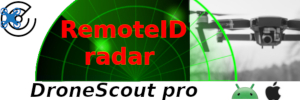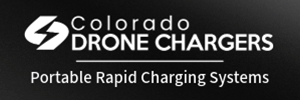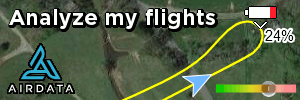the maximum forwards speed for the MM is a trade off between forwards propulsion versus lift it only has a very small amount of aerodynamic lift from its profile and as has been stated before ,there is a maximum tilt angle before lift is lost,if you want a drone that has all these autonomous features you are asking for, and only weighs 250g then don't hold your breath
You are using an out of date browser. It may not display this or other websites correctly.
You should upgrade or use an alternative browser.
You should upgrade or use an alternative browser.
Auto switch to SPORT (increase angle) - high wind?
- Thread starter chriscuk
- Start date
RogerDH
Well-Known Member
It shouldn't require anything but software. The drone can tell when it's losing altitude, so it could take the tilt up to that point and then back off a little. That's similar to position hold but with the opposite objective.the maximum forwards speed for the MM is a trade off between forwards propulsion versus lift it only has a very small amount of aerodynamic lift from its profile and as has been stated before ,there is a maximum tilt angle before lift is lost,if you want a drone that has all these autonomous features you are asking for, and only weighs 250g then don't hold your breath
seriously, how do we know if the tilt angle has not already been worked out by DJI ,you can bet it has,and apart from anything else those levels of complexity are not going to be present on an entry level drone anywayIt shouldn't require anything but software. The drone can tell when it's losing altitude, so it could take the tilt up to that point and then back off a little. That's similar to position hold but with the opposite objective.
TDZHDTV
Well-Known Member
The Mini already has a lift problem flying into wind in S mode, I’m not sure if you’ve noticed but it climbs in altitude. Not sure if DJI will correct it moving forward or improve performance.
seriously, how do we know if the tilt angle has not already been worked out by DJI ,you can bet it has,and apart from anything else those levels of complexity are not going to be present on an entry level drone anyway
The fact is they know how much tilt they can accept in P and in S. They could make it so that when the high wind warning appears it allows the same level of tilt as in S mode. That would be incredibly easy to code into the device.
@chriscuk hi my friend you seem determined to keep pushing this idea, so if it is so incredibly easy, why don't you write the code, and ask DJI to put it in a firmware updateThe fact is they know how much tilt they can accept in P and in S. They could make it so that when the high wind warning appears it allows the same level of tilt as in S mode. That would be incredibly easy to code into the device.
Mladen Matković
Member
My plan if strong wind kicks in:The fact is they know how much tilt they can accept in P and in S. They could make it so that when the high wind warning appears it allows the same level of tilt as in S mode. That would be incredibly easy to code into the device.
If RTH is activated, I am looking at the AC orientation on map. If RTH holds AC's orientation steady, RTH is cancelled, jump to S mode and try to go lower and keep orientation towards home point. If RTH can't keep orientation, cancel RTH, try with S mode to come back or land where it is. Then find my drone.
bumper
Well-Known Member
With helicopters, there is a finite forward speed due to the blades on one side advancing (thus having more speed in relation to relative wind) with blades receding on the other (much less speed). This is made up for, at least to a degree, by the swash plate decreasing the advancing blade's angle of attack while increasing that of the retreating blade, without which the aircraft would want to roll off to one side. Still, there will be a forward speed above which straight and level flight can't be maintained as the aerodynamic "correction" runs out. For the Eurocopter EC120B, that's 120 knots IIRC (a friend has one).
Of course most drone's don't have the luxury of changing individual blade pitch, but can vary power to each motor within finite limits. This is all above my pay grade, but I'm guessing there will be several factors, besides simply tilting the quad copter further forward, that will serve to limit airspeed.
Since DJI does spec the forward speed of their drones, and I assume there's marketing advantages in doing so, I bet the Sport mode has the drone going as fast as it can, within design specs, in straight and level flight.
Of course most drone's don't have the luxury of changing individual blade pitch, but can vary power to each motor within finite limits. This is all above my pay grade, but I'm guessing there will be several factors, besides simply tilting the quad copter further forward, that will serve to limit airspeed.
Since DJI does spec the forward speed of their drones, and I assume there's marketing advantages in doing so, I bet the Sport mode has the drone going as fast as it can, within design specs, in straight and level flight.
My plan if strong wind kicks in:
If RTH is activated, I am looking at the AC orientation on map. If RTH holds AC's orientation steady, RTH is cancelled, jump to S mode and try to go lower and keep orientation towards home point. If RTH can't keep orientation, cancel RTH, try with S mode to come back or land where it is. Then find my drone.
I'm not sure I see the differentiation of actions to take in your two "windy" scenarios ...
But you anyhow gets out with the right counter action, If not gaining speed in the right intended direction either commanded by the RTH automation or your own manual stick inputs ...
Cancel all automation, Go Sport, lose altitude & manually maneuver it to safety either by a emergency landing or a return flight to HP.
@chriscuk hi my friend you seem determined to keep pushing this idea, so if it is so incredibly easy, why don't you write the code, and ask DJI to put it in a firmware update
Considering it is a closed platform and there is no SDK for it I can't exactly write code for it but if/when they decide to release code for it I'm sure someone will implement it. I'll look at the tool kit for sure and see if I can code something. Android app development isn't one of my strong points but I've modded a few in the past.
From what I can see the Mavic has a user configurable config file that'd allow you to adjust parameters like max angle to allow faster top speed etc.
i hope that your aspirations for the MM are met eventually ,but i really don't think that it is going to happen any time soon but i could be wrong of course good luck in your venturesConsidering it is a closed platform and there is no SDK for it I can't exactly write code for it but if/when they decide to release code for it I'm sure someone will implement it. I'll look at the tool kit for sure and see if I can code something. Android app development isn't one of my strong points but I've modded a few in the past.
TDZHDTV
Well-Known Member
SDK will he release April 2020Considering it is a closed platform and there is no SDK for it I can't exactly write code for it but if/when they decide to release code for it I'm sure someone will implement it. I'll look at the tool kit for sure and see if I can code something. Android app development isn't one of my strong points but I've modded a few in the past.
From what I can see the Mavic has a user configurable config file that'd allow you to adjust parameters like max angle to allow faster top speed etc.
Well apparently the SDK will be out in April. They've held true to their word on other release dates so hopefully this will happen. I'll probably have gotten bored of the MM by then but with everything already said there is no technical reason why it's not possible.
A quick look at the SDK for the rest of the range it shows you that you can perform an action based on a condition. That condition would be the wind warning and it'd be a case of swapping to sport mode. Fairly simple if / then case. Maybe not that simple for changing rth parameters but a simple swap of P to S based on a warning seems simple.
I'll see if they charge to become a developer as I'm not going to pay for it. Most places that I've dealt with tend to give you access to their sdks for free.
A quick look at the SDK for the rest of the range it shows you that you can perform an action based on a condition. That condition would be the wind warning and it'd be a case of swapping to sport mode. Fairly simple if / then case. Maybe not that simple for changing rth parameters but a simple swap of P to S based on a warning seems simple.
I'll see if they charge to become a developer as I'm not going to pay for it. Most places that I've dealt with tend to give you access to their sdks for free.
Last edited:
Mladen Matković
Member
I'm not sure I see the differentiation of actions to take in your two "windy" scenarios ...
But you anyhow gets out with the right counter action, If not gaining speed in the right intended direction either commanded by the RTH automation or your own manual stick inputs ...
Cancel all automation, Go Sport, lose altitude & manually mwaneuver it to safety either by a emergency landing or a return flight to HP.
Mladen Matković
Member
Agree
Agree and yes, it would certanly be beter to rely on piece of software to squeeze all the power mini can give in that circumstances.I'm not sure I see the differentiation of actions to take in your two "windy" scenarios ...
But you anyhow gets out with the right counter action, If not gaining speed in the right intended direction either commanded by the RTH automation or your own manual stick inputs ...
Cancel all automation, Go Sport, lose altitude & manually maneuver it to safety either by a emergency landing or a return flight to HP.
Actually looking at the SDK in a bit more detail for the current gen drones they've got it all very easily accesible.
enum FlightWindWarning
Description:
Warning caused by the strong wind.
Enum Members:
enum FlightWindWarning
| @EXClassNullAway enum FlightWindWarning |
| Package: | dji.common.flightcontroller |
| SDK Key: | FlightControllerKey.FLIGHT_WIND_WARNING |
Warning caused by the strong wind.
Enum Members:
| LEVEL_0 | No wind warning. |
| LEVEL_1 | The wind speed is high. Fly with caution and ensure the aircraft remains within the line of sight. |
| LEVEL_2 | Strong Wind. Fly with caution and ensure the aircraft remains within line of sight. It is more serious than LEVEL_1. |
| UNKNOWN | Unknown. |
Ian in London
Well-Known Member
Actually I'm pretty sure I'm correct as I thoroughly tested this. The original Mavic Pro will, by default, limit its pitch to ensure the collision avoidance sensors continue to work, thus greatly limiting the pitch and subsequent speed it can maintain in high wind. Taken from the Mavic 1 Pro manual:They all have default settings that you can change if you choose to.
But none of these auto disable anything.
When your video guy says at 4:12 that the Mavic 2 in P mode auto disables OA, he is incorrect.
If you have OA enabled, you get OA.
If you disable OA, you get extra speed because OA is disabled and the drone can tilt further.
If you choose to fly with OA enabled in any of them, your P-GPS speed is less than the max possible P-GPS speed.
"When the Forward Vision System is enabled and lighting conditions are sufficient, the maximum flight attitude angle is 16' with maximum flight speed of 22 mph (36 kph).
When the Forward Vision System is disabled, the maximum flight attitude angle is 25' and the maximum flight speed is 36 mph (58 kph).
So if you manually disable the collision avoidance on the Pro 1, then it too will pitch far steeper and handle the wind far better, and I proved that in another wind test for the original Mavic Pro (video below: link starts at demo point).
Conversely the Mavic Air and the Mavic 2 Pro warn you that collision avoidance sensors are no longer working when encountering very strong wind, and both models continue to pitch very steeply into the wind.
Chris' statement could be better worded by saying:
mavic pro - collision avoidance on by default - limits pitch
mavic air - allows very steep pitch that stops sensors working
mavic pro 2 - allows very steep pitch that stops sensors working
And so his question is valid; if the Mavic Mini's top speed is 29 mph in Sports Mode, but only 18 mph in P Mode, two questions arise:
1, why does it appear to switch you from S mode to P mode if it initiates an auto-RTH, and
2, why doesn't it just use the maximum power and speed that it could achieve in S mode, even if it doesn't actually switch mode?.
Note the logs from my New Year's Eve blowaway; you can see I manually changed to Sports Mode at 12:37, then at 18% battery (19:16), the auto RTH kicked in, and then after I realised how wasn't working, I had to manually switch to Sport Mode again, at 19:46.
As Old Man Mavic rightly points out, either way, the Mini is not capable of handling strong wind, but to me, it could do better by utilising the maximum power available to it....
Cheers, Ian in London

1, why does it appear to switch you from S mode to P mode if it initiates an auto-RTH, and
Can't answer your second but most probably the answer for the first is, as you should already consider winds before and during the flight yourself, they focused on the distance and targeted the battery saving, so that they can bring it back from farther. (imo)
Instead of just warning you about the power, they should make it trigger maximizing power though. As it means nothing(saving battery, rth from farther) if the drone doesn't move a bit.
Last edited:
Ian in London
Well-Known Member
Fair point. Which ever way they go, some situations will prove it the wrong choice....Can't answer your second but most probably the answer for the first is, as you should already consider winds before and during the flight yourself, they focused on the distance and targeted the battery saving, so that they can bring it back from farther. (imo)
If you are in a situation where you need an emergency boost to fight a strong headwind, you've probably already lost the battle.Well, if that's the case, my suggestion is obviously superfluous but I made it because, as I said, I doubt that. As sar104 points out, Sport mode needs to reserve some power for climbing and maneuvering, and I'm talking about an "emergency" mode when all you want is maximum speed to fight the wind. Since the drone can know when it's tilted too far to maintain altitude, it seems there could be an autonomous dynamic mode to do that.
Trying to muscle through a strong headwind will burn battery faster but is unlikely to make much effective difference.
It's not hard to avoid getting into that situation and prevention is 10x more effective than trying to deal with it after you are in it.
It doesn't.1, why does it appear to switch you from S mode to P mode if it initiates an auto-RTH
RTH is a separate mode.
If RTH is initiated, the drone is not in P-GPS Mode at all, it's in Go Home Mode.
Similar threads
- Replies
- 13
- Views
- 2K
- Replies
- 2
- Views
- 474
- Replies
- 22
- Views
- 5K
DJI Drone Deals
New Threads
-
Elise Stefanik will not run for governor and will not seek reelection to her house seat.
- Started by Jim Martin
- Replies: 1
-
-
-
Skunk Works and XTEND Partner for Advanced Mission Execution.
- Started by The Droning Company
- Replies: 0
-
Decatur man pleads guilty to illegally operating drone over Truist Park during MLB All-Star Game
- Started by mavic3usa
- Replies: 1









